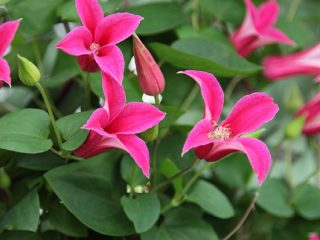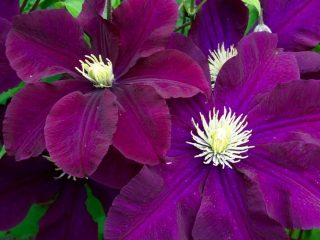Content
If the leaves of peonies curl in the spring, this indicates improper care of the plant or the presence of diseases. With high-quality weekly care there should be no problems. Peonies have good immunity and, if grown correctly, practically do not get sick.
Why do peonies' leaves curl in spring?
Recently, summer residents have begun to actively complain about the appearance of angiosperms. The thing is that the beautiful peony leaves curl and dry. The problem has been haunting flower growers for a long time. People want aesthetically pleasing petals, stems and leaf blades, but end up with a tired peony appearance.
Curling of leaves most often occurs after the winter period. With the onset of the first warm days, flowers, missing the sun's rays, try to get as much light as possible. With the first days of spring, the process of photosynthesis increases several times.The air around the plant is renewed.
Healthy peonies have dense, dark leaves. They are constantly in a branched state, open to review. If small curls appear on a pair of leaf plates, this is a sign for more careful observation and care. Visible deformations of the leaf plate already indicate a problem in the nutrition of the flower. When the first signs of curling appear, it is necessary to diagnose the soil, the composition of fertilizers, and diseases that could affect the change in the appearance of peonies.
Lack of sunlight
The sun is a vital factor for the normal existence of flowers. Only thanks to light does the process of photosynthesis proceed efficiently. As a result of carbon metabolism, oxygen is released into the environment - an essential component of the respiration of living organisms.

If plants are deprived of an accessible form of light, external indicators deteriorate
The main element of photosynthesis is chlorophyll. Without sunlight, it loses its effectiveness.
To prevent curling, it is worth adding more light to the life cycle. This can be done by transplanting the bush to a brighter place. This way you can protect the angiosperm from the problem of curling.
Lack or excess moisture
When the water balance is disturbed, the metabolism inside the angiosperm changes, cell walls are destroyed, and the succulent parts wither: leaves, petals, etc. To prevent a negative outcome, it is recommended to regularly monitor the moisture of the soil in which the bush grows. During the summer, experts advise adding liquid to keep the growing medium moist. In winter and early spring, the soil must be prevented from freezing.

With a well-constructed watering schedule, the leaves will not curl
Excessive moisture is also not allowed. In a large amount of moisture, the roots begin to rot, the shoot does not receive enough nutritional compounds, and accordingly, the leaves curl.
Damaged roots

Be careful when working with roots
The rhizome is the main organ of nutrition. Through a complex network of channels and tubes, mineral compounds are delivered from top to bottom and vice versa. If the mechanism is disrupted, all shoots lack nutrition. The leaves begin to curl and change color, the flower petals lose their bright shade.
You can injure the roots in different ways. Inexperienced gardeners often make mistakes when replanting using a sharp shovel. Insects often cause disturbances in the nutrition of peonies.
Thickening
In order for peonies to receive useful substances, the nutrient medium must be well-conducted with liquid. There are times when gardeners select the wrong soil for a plant. Because of this, nutritional problems arise and leaves curl. Beneficial mixtures cannot enter the plant’s body because the soil layer is too thick and does not conduct water. And here the consequences are the same as in the absence of moisture - curled leaves, loss of color.
Excess nitrogen
Nitrogen is a component that is used in caring for flowers. Usually presented as part of fertilizers and fertilizers for each season. The concentration of applied nitrogen depends on the time of year. In warm weather it is recommended to increase it.
Nitrogen promotes the normal growth and development of peonies, especially in the first years of life in a new place. This species of angiosperms takes a long time to get used to unknown living conditions. With the help of a chemical element, healthy leaves, petals and reproductive organs are formed.
But nitrogen deficiency is just as harmful as excess. Gardeners should not get carried away with fertilizers, especially in winter. Large concentrations of the reagent lead to disturbances in the growth, nutrition, and immunity of peonies; the leaves curl and dry out. Before using fertilizers containing nitrogen, experts advise choosing the correct dose of the active drug.
Potassium deficiency
Potassium is responsible for the healthy formation of peony parts. In winter, it accumulates in the roots. Deficiency of the element leads to disruption of the processes of reproduction and development. May cause leaf curling.
Diseases
The most common diseases of peonies include: gray rot, rust, powdery mildew and others. Many of them are caused by insects. You can get rid of the problem using insecticides. Pests do not tolerate chemicals.
It is necessary to regularly monitor the condition of peonies. If curled leaves appear, immediate action should be taken.
What to do if peonies' leaves curl and dry out

You need to understand the reasons that lead to leaf curling
They conduct a comprehensive analysis of care procedures, soil composition, age of peonies and their proximity to other representatives, quality of applied fertilizers, etc. It is worth saying that the process is not quick. Even experienced gardeners are rarely able to accurately determine the problem area.
There is an algorithm that is guaranteed to help peonies fight curling. Flower growers should monitor several indicators. Among them:
- Soil composition. After the cold season, the soil loses its beneficial properties. Feeding helps correct the situation.They prevent leaves from curling.
- Fertilizers. Many products that are sold in the store are not suitable for peonies specifically. If you add excess reagents, the leaves lose color and curl.
- Watering. Like many angiosperms, peonies really need a lot of moisture. Limitation of fluid can lead not only to leaf curling, but also to disruption of all life processes.
- Neighborhood. Not all plants are equally neutral towards each other. Some species exhibit strong competition for light, moisture and nutrients. Peonies cannot coexist with all crops in the same flower bed. Twisting is the main sign of an unsuitable neighborhood.
- Light. The sun's rays must be present in the life of peonies. They ensure photosynthesis, the process of oxygen formation. Due to lack of light, twisting occurs.
If you follow all the points, you can achieve victory over peony disease - curled leaves.
Prevention measures
If a problem arises and the peony leaves curl, you need to constantly monitor the appearance of the seedling. This may be a harbinger of illness, insect infestation, or a signal of improper care.
You should pay attention to watering, fertilizing and proximity to other representatives. In addition, it is recommended to strengthen the immune system with various chemical elements.
When insects appear, the outer part should be treated with insecticides. Curling the leaves should not spoil the overall impression of the peony.
Conclusion
A problem that often arises in flower gardens is that peonies' leaves curl in the spring. All this happens due to insufficient nutrition, watering, lack of light and many other factors.Plants can be healed with fertilizers, intensive soil moisture, and fertilizing with potassium and nitrogen.








